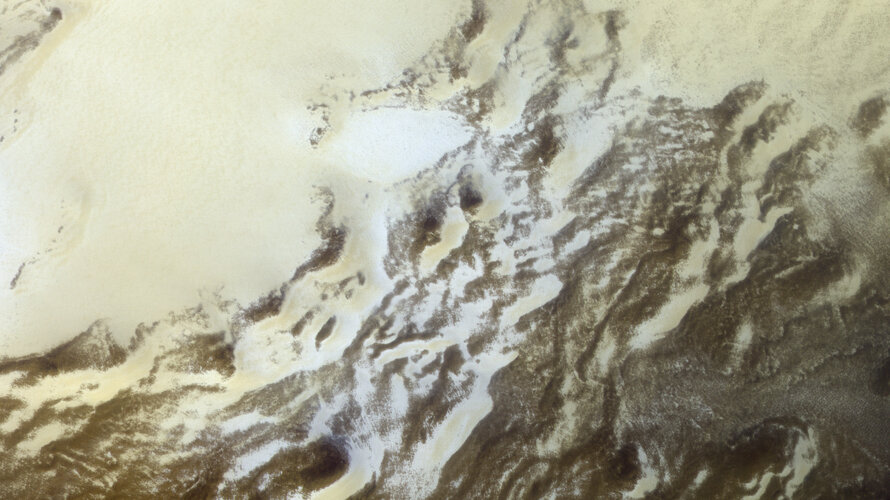
This view may resemble a snowy scene observed from an airplane flying over Earth’s mountain ranges, but it is in fact a spectacular scene captured by the CaSSIS camera onboard ESA’s ExoMars Trace Gas Orbiter, or TGO, as it flew over the ice-coated Korolev crater on 21 August 2019.
Korolev is an 80 km-wide crater in the northern polar regions of Mars that contains a massive ice sheet in its centre, the third largest exposed ice sheet on Mars, after its polar caps. The beauty of this ice sheet was captured in its entirety in a stunning mosaic of images taken by the HRSC camera on ESA’s Mars Express over the course of its 15-year – and counting – odyssey at the Red Planet.
TGO also captured a beautiful slice of Korolev crater in April 2018, which was one of the first images the spacecraft sent back to Earth after arriving in its science orbit around Mars.
In the image presented here, the CaSSIS camera reveals the detail of the crater’s south-eastern wall, which was illuminated at sunrise during the start of summer in the northern hemisphere. The walls of the craters at this latitude get fewer hours of sunlight on average throughout the year, so they have permanent deposits of water ice. In addition, at this time of year, carbon dioxide ice is still present on the surface left over from the seasonal cap that covers the polar regions during winter, contributing to the appearance of snow-covered mountain peaks.
Compare with this image taken in the same region a few months later, after much of the carbon dioxide ice has receded.
The image is centred at 164.90ºE/72.02ºN and was taken on 21 August 2019. The scale is indicated on the image.
Click here for original story, Ice-coated crater
Source: ESA Top Multimedia